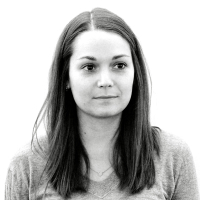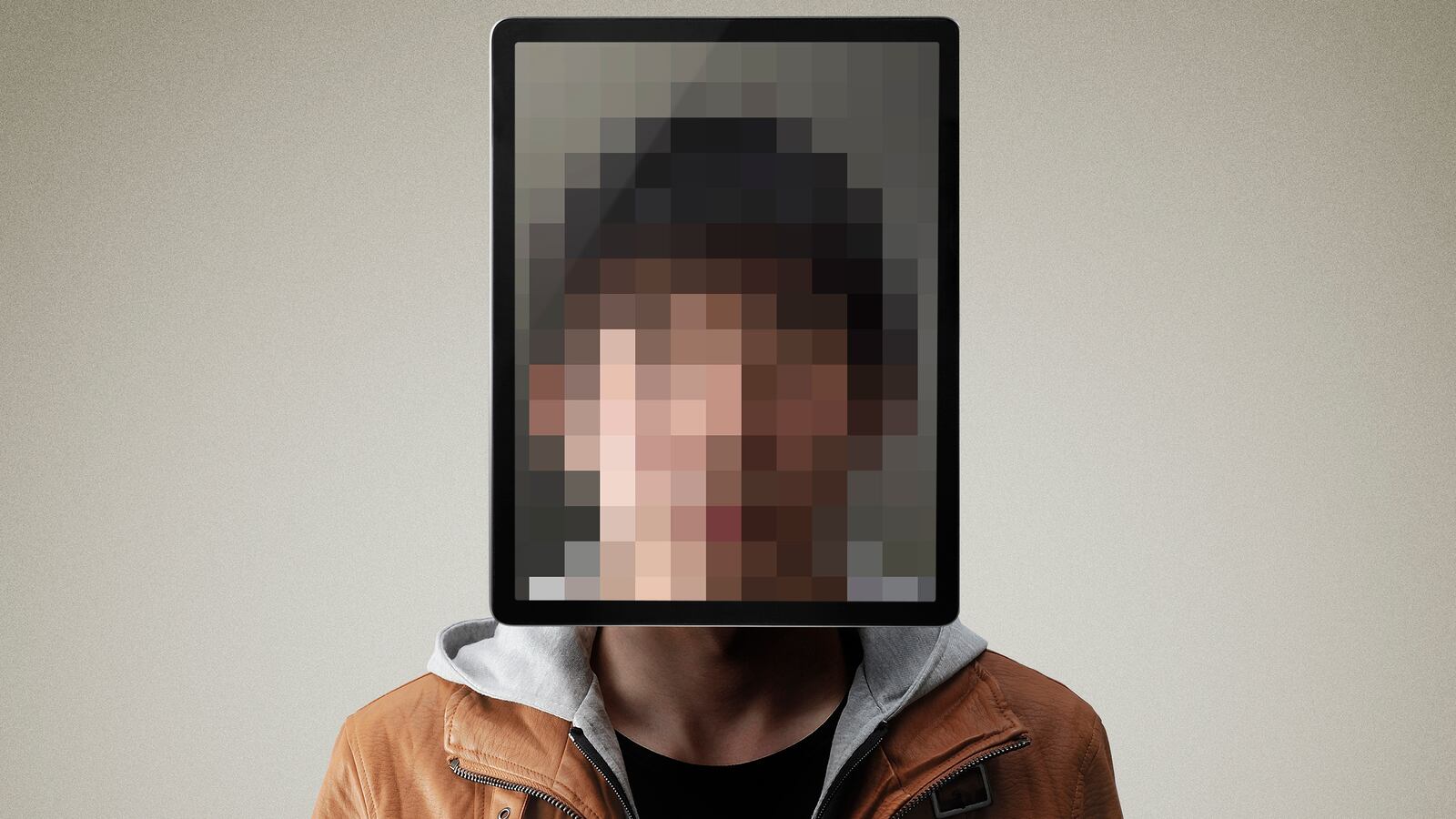I would never hitchhike, but I’ve slept on a stranger’s couch.
I was travelling through Italy and liked the look of the pictures they had posted on a couch-surfing website. It turned out to be a great time—they fed me home-cooked meals, introduced me to their friends, and showed me a part of Rome that I never would have seen otherwise. But for the whole weekend, I also couldn’t shake the thought that the risk I took could have gone horribly wrong.

My generation grew up with the Internet, spending formative years connecting with others online—first friends, then, increasingly, strangers. We’ve gotten used to sharing intimate details of our lives alongside our real names and photos. We seek friends, professional contacts, and dates in the same way we look for restaurants or concert tickets. A few years ago, our parents might have been worried that this fluency in digital communication would leave us somehow stunted, hiding behind the veil of an online persona. But the opposite appears to be true—millennials are only too eager to share their lives with people they don’t even know. Have we become too naive for our own good?
The red flags seem to pop up increasingly often. In January, Notre Dame linebacker Manti Te’o was humiliated for having a very public e-relationship with a very imaginary e-woman. Apparently, there are enough people consorting with potential frauds online that the 2010 film Catfish, in which 20-something New Yorker Nev Schulman discovers that his “girlfriend” is really just one of several characters created and played by a middle-aged mother of four in Michigan, has spawned a spinoff series on MTV. One would think the story of University of North Carolina physics professor Paul Frampton, whose relationship with an Internet fraud landed him in an Argentine jail (and in The New York Times Magazine), would serve as a warning as well.
When did we let our guard down? How did we evolve from the days of AOL, with its inscrutable user names and anonymous chat rooms, to sharing our age, sex, location, and damn near everything else about ourselves—and a geo-location tag to boot—with perfect strangers?
“Human beings operate in a very strange way,” says Catalina Toma, a University of Wisconsin professor who studies how the way we communicate is affected by new media technologies. More than we realize, she says, we use nonverbal cues such as facial expressions to determine whether someone can be trusted. (Of course, even judgments based on in-person interactions can be faulty; Neville Chamberlain famously came away from his first meeting with Adolf Hitler with “the impression that that here is a man who could be relied upon when he had given his word.”) Online, though, things are trickier. Nonverbal cues are removed, so we need to rely on other indicators. Toma says humans don’t manage this process very adroitly. “When you have little information about someone, we tend to fill in the blanks,” she says—more often than not in an unrealistic manner. “Filling in the blanks leads you to like someone without knowing much about them, which leads to an intensification of emotions,” says Toma. This explains, in part, why relationships can blossom online at a more accelerated pace than they would in person.
Smartphone apps like Grindr have been able to parlay that acceleration of trust (and, dare we say, desire) into a big business. The app, which caters to gay men looking for hookups, uses GPS to pinpoint its users’ locations in relation to one another—like the Yelp app that helps you find a coffee shop, except the coffee shop is sex. In 2009 when Grindr debuted, it was revolutionary. Four years later, location-based apps are seemingly everywhere. People check into restaurants on Foursquare and tag the exact location where their Instagram photos were taken. Straight people even got on the Grindr bandwagon with its sister product, Blendr. Tinder, a dating app that lets users see one another’s location as well as mutual Facebook friends, has recently taken off as well.
Just more pieces of information we’ve put out for others to see. “This decade, it’s all about sharing your location, where you are and what you are doing,” says Joel Simkhai, a co-founder of Grindr. Over the past 10 years or so, Simkhai estimates, young people have “become more comfortable having an online identity, posting pictures of ourselves with our real names—not a strange AOL handle, but a real identity. And we are very comfortable sharing parts of our real identity with strangers.”
Simkhai is right, and he nods to an important evolution of online behavior. Believe it or not, social media dates back to at least 1980, when sites like the “geek paradise” Usenet sprouted in order to link like-minded people with common interests—folks who would likely be connected in real life, too. In the early 1990s, America Online made the Internet available for a much wider group of people, who aside from email mainly connected through chat rooms—but with the larger user base came more anonymity. Remember your username? It rarely matched your full name, as your Facebook profile does now.
You could think of 1995’s Classmates.com, which asked for your full name and alma mater as the building block of your profile, as an early version of the way adults use social media now. By the early 2000s, sites like Friendster, MySpace, and especially Facebook cemented the idea of merging our real-life identities with our Internet identities. Facebook initially required its users to have a university email address in order to sign up and rejected fake names, all in an effort to help you connect with your “network”—the people on your campus, at your job, or in your family.
Over the past few years, the objective of social media has shifted again: from keeping in touch with to meeting new people. Sites like Craiglist, Grindr, and Couchsurfing exist to connect you with perfect strangers. Facebook’s new graph search is an explicit effort to help you expand your network beyond those people you may already know. (Couchsurfing, which I used in Rome, has several safety features in place, including a system in which users can vouch for the trustworthiness of apartments they’ve stayed at.)
To be sure, many social-media users have an acute sense of skepticism. According to a study published in 2007 by Toma and others, for example, the majority of people who use online dating sites assume that other participants are misrepresenting themselves in their profiles. But emotional reactions spawned by the “fill in the blanks” theory can often outmaneuver that sense of doubt.
“When people are emotionally invested, they tend not to process in a cool or rational way anymore. They are inclined to disregard potentially suspicious information,” explains Toma. “People scan the environment for clues that confirm what they already believe” as opposed to the other way around. Now it’s not so hard to see how Te’o and Frampton could be so easily fooled.
The sheer magnitude of our online environment contributes, too. A study released in January by Ipsos Open Thinking Exchange, a culture and technology research center, found that the average social-media user under the age of 35 spends 4.2 hours every day engaging with people online. Being connected to so many people “generate[s] this sense that you’re not alone, which can really mess with your perception of risk,” Kathleen Cumisky, a professor of psychology, gender, and sexuality at the College of Staten Island, told The New York Times in a story about Sarai Sierra, the 33-year-old Staten Island woman who was found dead in Turkey earlier this year. It “lulls you into this sense of security because it is a world of your own creation.”
Last week, a homeless Turkish man allegedly confessed to killing Sarai, but in the months since she first went missing, news coverage of the investigation of her death emphasized her involvement in social media. An amateur photographer and mother of three, Sierra had about 3,000 followers on Instagram, many of whom she kept in touch with despite never having met in person. She’d gone ahead with the trip alone—her first out of the country—after her travel companion backed out, arranging her travel accommodations through AirBnB, an Internet-based marketplace for apartment sharing. Upon arriving in Turkey, it’s been reported that Sierra met up with at least two men she’d gotten to know through a photo-centric social networking site, and another with whom she stayed in Amsterdam. It’s apparent now that none of the people Sierra connected with online before meeting abroad were responsible for her death. Still, the focus on Sierra’s social-media use—which was really not excessive or out of the norm for someone her age—in the wake of her disappearance inspired a visceral reaction of fear that perhaps our online connections have made us a bit too trusting.
By sharing our personal information online, we’re taking a risk—the risk of exposing our own vulnerabilities, getting burned, or worse. At the same time, these new mediums are expanding our social circles, widening our worldview, allowing for new friendships, relationships, and collaborations across cultures that might never have been possible before. We can’t just dump them, can we?
J. Keith Murnighan, a professor at Northwestern’s Kellogg School of Management, has studied why we trust strangers. He says we should never cast aside caution, but says our implicit trust in strangers leads to good things more often than not. “Positive experiences with strangers facilitated by the Internet are making us realize more than ever that people actually are trustworthy,” Murnighan says. He bets that most Couchsurfers report positive experiences, even if he wouldn’t want his daughters to do it. “Then again, my mother didn’t want me to hitchhike and I did,” he said.
My mother probably wouldn’t, either. Four years ago, a derailed trip to London left me and a friend stranded in Málaga, a small beach town on the southern coast of Spain. Short on cash and without a place to crash, the two of us—each small, 21-year-old American women with mediocre Spanish skills—decided to stay up all night until the next train came to take us back to Sevilla, where we were living. Wandering around the city’s sleepy, unfamiliar streets, we came upon a group of young, nice-looking men and asked them where we should go. They excitedly guided us to a bar, then to a club, then on a drunken tour of Málaga that ended at one of their apartments. We ate sandwiches and drank coffee while the sun rose. Then one of the men accompanied us to the train station to help us change our train tickets, stopping to buy us breakfast on the way. My friend and I often tell this story, reflecting fondly on the kindness of strangers, knowing in the back of our minds that we were lucky to come away from the adventure with an entertaining travel tale instead of ending up with our smiling faces broadcast on the 5 o’clock news like Natalee Holloway. Or Sarai Sierra.






